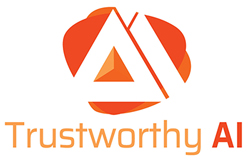This Framework has been developed in the context of the Erasmus+ project “Trustworthy AI” with the goal of facilitating the introduction of the High-Level Expert Group’s Guidelines on Trustworthy AI (EUCommission, 2018) into Higher Education across disciplines. This goal is aligned with the EU’s digital strategy, which emphasises the need to train professionals that can “shape technology in a way that respects European values” (EU, 2020). Towards this purpose, the High-Level Expert Group’s Guidelines on Trustworthy AI outline the necessary requirements for responsible and trustworthy development; the goal of this project is therefore to use them as a starting block for the introduction of ethical and socio-legal competences in Higher Education topics related to AI.
The main goal of this Framework is to describe the principles and learning strategies to be followed to develop students’ competences. The findings are presented in the form of recommendations for educators, needs in educational materials and policy incentives answering the following questions:
The Framework we present is based on the analysis of 11 expert interviews across 5 countries as well as a study of the literature in the form of a systematic literature review.
Throughout this document, we will refer to the High-Level Expert Group as “HLEG”, to the Guidelines on Trustworthy AI as “the Guidelines”, to the associated Assessment List as “the Assessment List” and to the 7 requirements outlined in the list as “the Requirements”. Higher Education will sometimes be abbreviated as “HE”.

